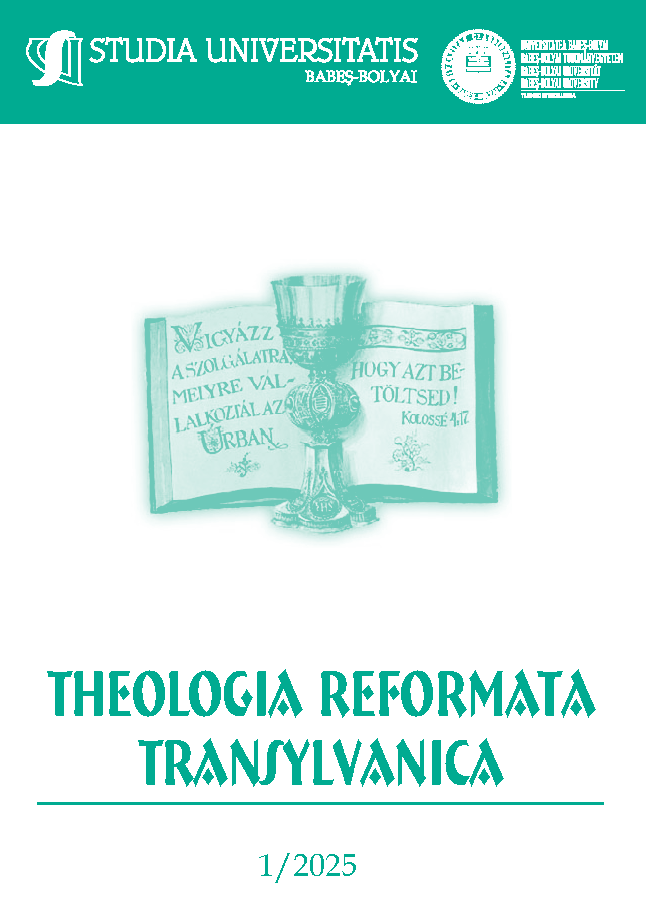Ellenreformáció, felvilágosodás, állami erőkoncentráció-optimalizálás? Heinrich Kajetan Blümegen grófjának bevonása az erdélyi vallásügyek főfelügyeletébe 1763–64-ben
DOI:
https://doi.org/10.24193/subbtref.70.1.10Keywords:
Maria Theresa, Heinrich Kajetan Graf von Blümegen, Count Gábor Bethlen, Samuel Freiherr von Brukenthal, Adolf Niklas Baron von BuccowAbstract
Counterreformation, Enlightenment or Optimization of the Concentration of State Power? Count Heinrich Kajetan von Blümegen’s Involvement in the Oversight of Religious Issues in Transylvania in 1763–1764. For specialists of Hungarica and Transylvanica research, it is of absolute importance to keep in mind that Vienna was the primary location for the Hapsburg rulers’ decision preparation and decision-making regarding issues related to Hungary and Transylvania. Accordingly, the House, Court, and State Archives (Haus-, Hof- und- Staatsarchiv), the Imperial Chamber Archives (Hofkammerarchiv), and the War Archives (Kriegsarchiv) have always been the primary base for historical research into the Hapsburg Era (from 1526 to 1918). The House, Court, and State Archives has functioned as the most important depository for court-related subjects since Kaunitz’s founding of the Council of State. Available therein are documents of mixed origin, nature, and subject matter chronicling the endeavours of the imperial cabinet. From the perspective of the uppermost political decision-making process, these documents offer the most informational value. These documents, available in original or duplicated form, primarily consist of submissions, memoirs, memoranda, drafts, negotiation documents, proposals, directives, and publications related to Hungary or Transylvania. Rich materials on Transylvania were preserved there in the past, for in contrast to the Hungarian Court Chancellery, which had been made independent in a more realistic fashion in 1690, the court administrative organ of Transylvania received regular oversight after 1711. The position of “Minister in Transylvanian Negotiations”, as it would be later called, was created in 1751. Hungarian historian and archivist Zsolt Trócsányi (1926–1987) consistently used the designation to refer to the “erdélyi miniszter”, i.e. the Minister of Transylvania. Between 1765 and 1791, Transylvania also lacked its own (that is: native, of noble rank, and with a legitimate estate in Transylvania) court chancellery. Administrative proceedings were instead led by Samuel von Brukenthal, who presided over the Transylvanian Committee and had also kept his provincial chancellery, until 1774. As early as 1763, he had worked as the antithesis of Count Gábor Bethlen regarding the three most significant and concerning issues in Transylvania: 1.) tax issues (Contributionalia), 2.) militarization of border security (Militaria), and 3.) matters taken over by the growing central authority (Currentia). Religious affairs (Religiosa) were of course not included, for Maria Theresa, who was a strict Roman Catholic, punctiliously guarded against taking her Saxon Evangelical advisor’s last word regarding the issue. However, since the freedom of the established religions made up part of the constitutionality of Transylvania, the empress could not do without Brukenthal’s expertise in this area or his Protestant political sensitivity. At the state council meeting on 10 June, 1763, Maria Theresa therefore ordered Count Heinrich Kajetan von Blümegen to go over beforehand the “Transylvanian issues” (in Transylvanicis) in a bid to forestall “argumentum ad hominem”. This assortment of issues included the most important ones – primarily concerning Greek rituals and Anabaptists, i.e. “religions tolerated in Transylvania” –, wherein General Buccow, the Supreme Commander and Governor of Transylvania, had already bypassed regular official channels and reported directly since 1761. The state minister in this regard took on the role of arbiter in the increasingly bitter Bethlen–Brukenthal duel.
References
Levéltári források:
HHStA StRP – Haus-, Hof und Staatsarchiv Kabinettakten Staatsratsprotokolle.
MNL OL A108 20 – Magyar Nemzeti Levéltár Országos Levéltára Magyar Kancelláriai Levéltár „Ungarn und Siebenbürgen” állag Acta Supremi Cancellarii Blümegen.
Szakirodalom:
BÉLAY Vilmos (1973): Magyar Kancelláriai Levéltár. Repertórium (Levéltári leltárak 59. – Kézirat). Budapest, Magyar Országos Levéltár.
EMBER Győző (1983): Az osztrák Államtanács (1761–1768). Kézirat, s. l. [Budapest]. MNL OL P 2093. (= Ember Győző hagyatéka.) 153. dob. 1–1000., 154. dob. 1001–1508.
HALMÁGYI István (1906): Naplói 1752–53. 1762–69. és iratai 1669–1785. (Magyar történelmi évkönyvek és naplók а XVI-XVIII. századokból IV.). Közli: SZÁDECZKY Lajos. Budapest, Athenaeum Könyvnyomda.
KOVÁCS Kálmán Árpád (2018): Az erdélyi valláspolitika rendszere az 1760–70-es években. Budapest, METEM.
PAULINYI Oszkár (1956): Bécsi levéltárakból kiszolgáltatott iratok (Levéltári alapleltárak I. Országos Levéltár 11. – Kézirat). Budapest, Levéltárak Országos Központja.
RESS Imre (2008): A Monarchia levéltári öröksége. A badeni egyezmény létrejötte (1918–1926). Budapest, Magyar Országos Levéltár.
SZÁDECZKY Lajos (1908): A székely határőrség szervezése 1762–64-ben. Okírattárral (1761–1790). Budapest, Magyar Tudományos Akadémia
UJVÁRY Gábor (2017): Kulturális hídfőállások A külföldi intézetek, tanszékek és lektorátusok szerepe a magyar kulturális külpolitika történetében. II. kötet. Bécs és a magyar kulturális külpolitika. Budapest, Ráció.
WALTER, Friedrich (1938): Geschichte der österreichischen Zentralverwaltung in der Zeit Maria Theresias: II/1. Bécs, Holzhausen
WELLMANN Imre (1951): A Magyar Kancellária levéltára (Levéltári alapleltárak I. Országos Levéltár 1.). Budapest, Levéltárak Országos Központja.
Downloads
Published
How to Cite
Issue
Section
License
Copyright (c) 2025 Studia Universitatis Babeș-Bolyai Theologia Reformata Transylvanica

This work is licensed under a Creative Commons Attribution-NonCommercial-NoDerivatives 4.0 International License.



